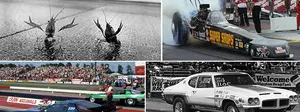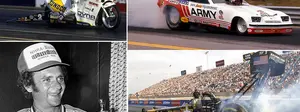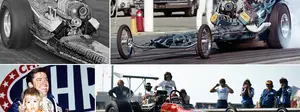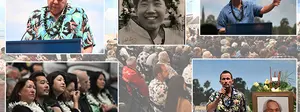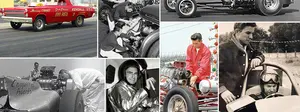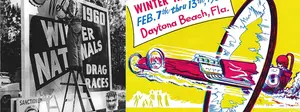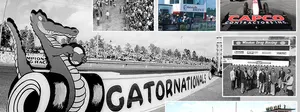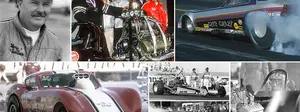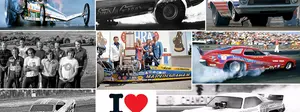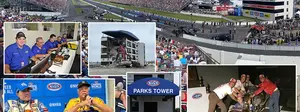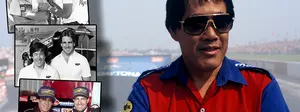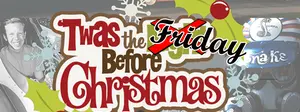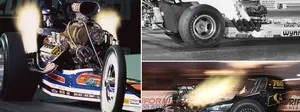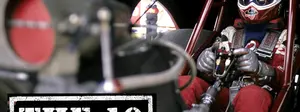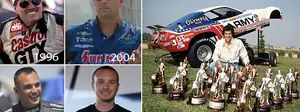Going all commercial on you
From early indications, this ramp-truck thread may just turn out to be another long-winded wedge-type deal as tips and pics continue to flow in and out of Insider International's global information headquarters. Part of this, of course, is due to the subjects involved – legendary Don "the Snake" Prudhomme and Tom "the Mongoose" McEwen – but it's also because of the nostalgic twinges these old Hot Wheels haulers seem to inspire.
While I'm collecting info, photos, and interviews, I wanted to share some cool old Hot Wheels commercials that reader Jeff Mittendorf pointed me to on YouTube. Actually, he just gave me the link to the first one, and as anyone who has ever gone to YouTube to watch "just one video" knows, that doesn't happen. I followed all of the related videos and spent a lot of time remembering my youthful days with orange Hot Wheels track crisscrossing my bedroom floor, those crazy purple C-clamp deals stuck to every high ledge I could access and string track to.
I wrote here about my lifelong Hot Wheels passion in a series of columns that became known as the "growing up boy" thread, in which I related some of the stuff that only an adolescent boy would dream of doing, upon which the Insider Nation shared their own evil deeds here.
This first video, which runs about a minute and a half, is from 1970 and touts the new "Snake"-"Mongoose" dragstrip set, which, interestingly, featured a loop at midtrack; I'd like to see John Force negotiate one of those. It's actually three identical commercials -- with a different ending promoting an upcoming Speed Test Day – but has cool footage that kicks off each one, showing those first Hot Wheels cars at Orange County Int’l Raceway. The only real reason to watch to the end of the third one (or to fast-forward) is to see the cars completing the run that begins the commercial. The Speed Test Days mentioned were run at local Mattel shops, and cars were clocked on the inline Hot Wheels Speedometer shown in the video (it recorded to a maximum 220 mph). You can actually find these speedometers online for very cheap (a quick look at eBay showed them to be priced from $6.99 (used) to $50 (in-the-box new). I don’t even want to think about all the things a kid could have done to his stock Hot Wheels to make them faster than those of his buddies, but I know what I would have done.
This video, which clocks in at just a shade over two minutes, is from 1968, the year that Hot Wheels hit the market. Sixteen cars (custom Barracuda, custom Camaro, custom Chevrolet Corvette, custom Eldorado, custom Firebird, custom Fleetside, custom Mustang, custom T-bird, custom Mercury Cougar, custom Volkswagen, Deora (based on a real custom surf truck designed by Harry Bradley for Dodge), Ford J-Car (based on the Ford GT40 Mk IV), Hot Heap (based on the Tognotti T roadster), Python (originally called the Cheetah and based on Bill Cushenberry's Dream Rod), Silhouette (based on another Cushenberry car), and the Beatnik Bandit (based on Ed "Big Daddy" Roth's custom car) were in the initial offerings and are showcased in these clips, which promote not just the cars but also the four track setups you could buy: Strip Action, Drag Race Action, Stunt, and Hot Curves Race Action. The difference between the first two was that the second came with enough track for two lanes and had a drop-action finish line to show who won. The commercials tout the cars' speed ("The fastest metal cars you've ever seen"), and anyone who ever had Matchbox cars before that can attest that the Hot Wheels' freerolling axles put the Matchbox cars to shame. The third of the three commercials in this clip shows this graphically (and somewhat humorously).
"Hot Wheels at my house in five minutes!" I don’t know a lot of kids who shouted that to their buddies from their bedroom windows, but this nearly 11-minute 1970 compilation is still pretty cool, focusing on the new carrying cases (especially the wheel-and-tire-shaped Rally Case; had a few of those!) as opposed to the pocketful-of-cars or brown-bag approach (both playfully skewered here). The third commercial (around the one-minute mark) shows Mattel's interest in drag racing with footage from the U.S. Nationals (Mickey Thompson's blue Mach 1 and "Big John" Mazmanian's 'Cuda) and hawks its crazy Rod Runner shifter-launcher (never really liked it; a poor man's Super Charger). After that is the same triple-play "Snake"-"Mongoose" commercial from the top clip. After that is a series of 10-second clips showing off some of the year's new models with new moving parts (the Whip Creamer's turbine, the Peeping Bob's retractable headlights, etc.). The Tune-up Tower taught us everything we needed to know about car maintenance back then – how to keep the wheels aligned for maximum speed (tool included!) – and a Dyno-Meter that purported to tell you the results. After that came the Sizzlers, with their built-in motor that you recharged with the Juice Machine, a gas-pump-looking device that you plugged into the car. Although (naturally) I had some, this is where Mattel kind of temporarily jumped the shark on the original Hot Wheels concept in my opinion.
By 1971, Mattel had 73 Hot Wheels cars, including the new Heavy Haulers, which included an ambulance, tow truck, fire engine, and flatbed hauler that I parked at the "top end" of my tracks as my own Safety Safari. The S'cool bus, a flip-top school bus, was among those and, I guess, was a Funny Car, just like the later Funny Money flip-top armored car (major props to the Hot Wheels guys for some very innovative names). They were obscenely heavy, though, and didn't always play well with some of the launchers, though they killed in the gravity-drop races, teaching us youngsters a little something right there. I also find it interesting that the Sizzlers commercials – the last ones shown in the 1970 clip and the ones shown here – featured adults playing with/admiring the cars. I'm not sure what that was all about, but clearly they were aiming for an older market with this more sophisticated kind of Hot Wheels. I have to give them credit, though; those Sizzlers cars would run a long time on a little charge.
1972 … gimmicks arrive. I don't know of a single friend who had the how-close-can-you-get? Bug Bite or the race-to-survive Snake Bite kits, the weird Drivin' Gear strap-on (which kind of turned your Hot Wheels into remote-control cars), or the portable but low-buck Zappit Pak launchers.
Again, major props to the Mattel guys for continually thinking up new stuff, but I never spent my allowance on these. Call me old-school. The 1972 model year did (as shown here), however, introduce the "Snake" and "Mongoose" wedge Top Fuelers (even though, as reported here a while ago, McEwen never had a wedge) with their hinged back decks and the previously mentioned Funny Money, which was twin-engine and pretty cool, even to a racing "purist" like me. And, yes, I still have mine.
 |
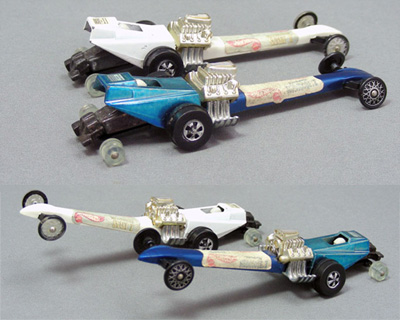 |
 |
I was kind of disappointed that none of these commercials showed the Wild Wheelie set, which I thought was very ingenious and featured the short-lived side-slab front-engine Hot Wheels Top Fuelers. The set came with a combination Christmas Tree/rubber-band launcher, the cars, parachutes, and a finish-line winner indicator. The Christmas Tree was a gravity-operated set of "lights" inside a tower. You pulled the handle up and let it drop and watched it count down (the handle had a pin on it that followed a set of back-and-forth tracks inside the Tree, which slowed its descent). If you launched too quick, you’d even get a red-light. The real genius, though, was in the cars themselves.
As illustrated here, the chute pack was made of a heavier metal and latched up under the cockpit. In this position, the car was rear heavy, and the front end was off the ground. When you loaded it into the launcher, the T-shaped chute pack fit into grooves in the launcher that kept the chute pack and the car level. As soon as the car left the launcher, the nose went skyward, and the car rolled on its two main rear wheels and a set of detachable wheelie wheels. Farther down the track, you put in a short (maybe two inches; they're the short orange pieces in the foreground) piece of track that had raised bumps that would unlock the weighted pack and drop it to the track, bringing down the front end. Beyond that, you had your parachutes, which were tucked into plastic boxes with hinged lids and deployed by V-shaped catch device that was left exposed. When your dragster drove over the box, the front end snagged the V-shaped piece and pulled the parachute from its hiding place. Very cool! Today, this kit in mint condition is worth $500. (These photos are from the ToyCar Collector website, which shows (and sells) all of the "Snake" and Mongoose" cars; check it out here.)
Well, that blew through a good hour of your time. Hope you didn't get caught at work watching 40-year-old commercials. Fortunately for me, it's my job. Ha!
OK, see you next week with more ramp-truck madness.















